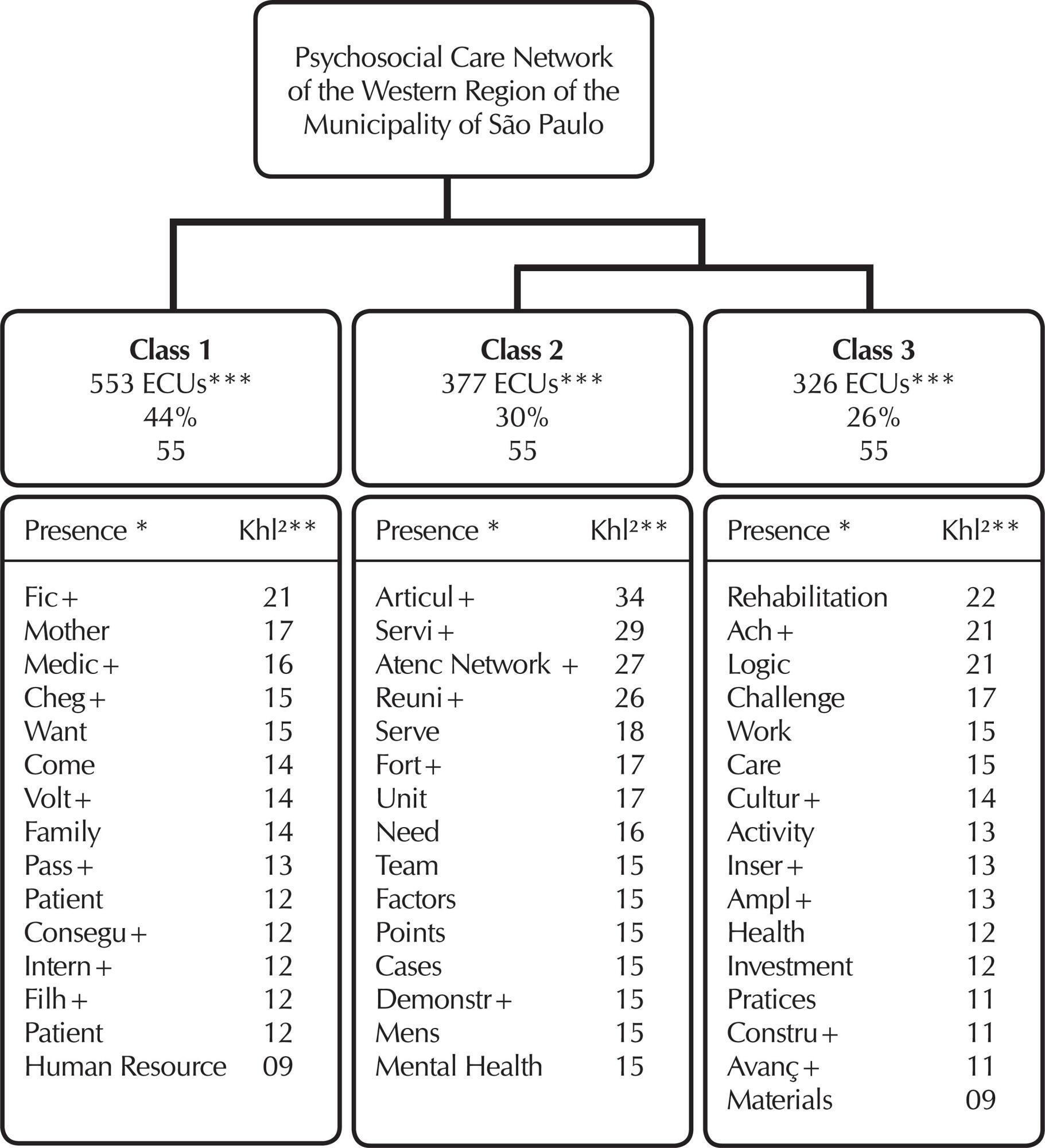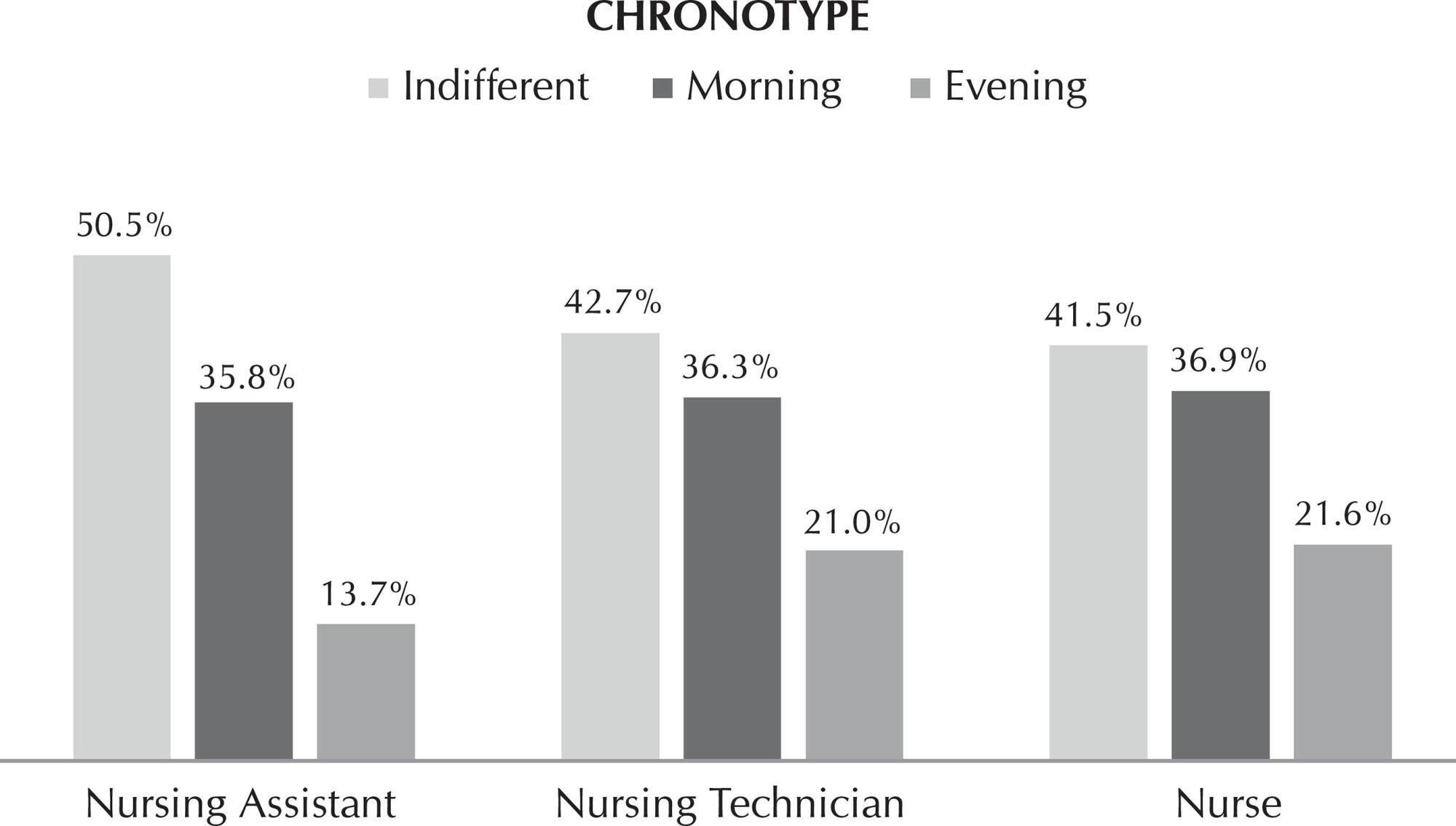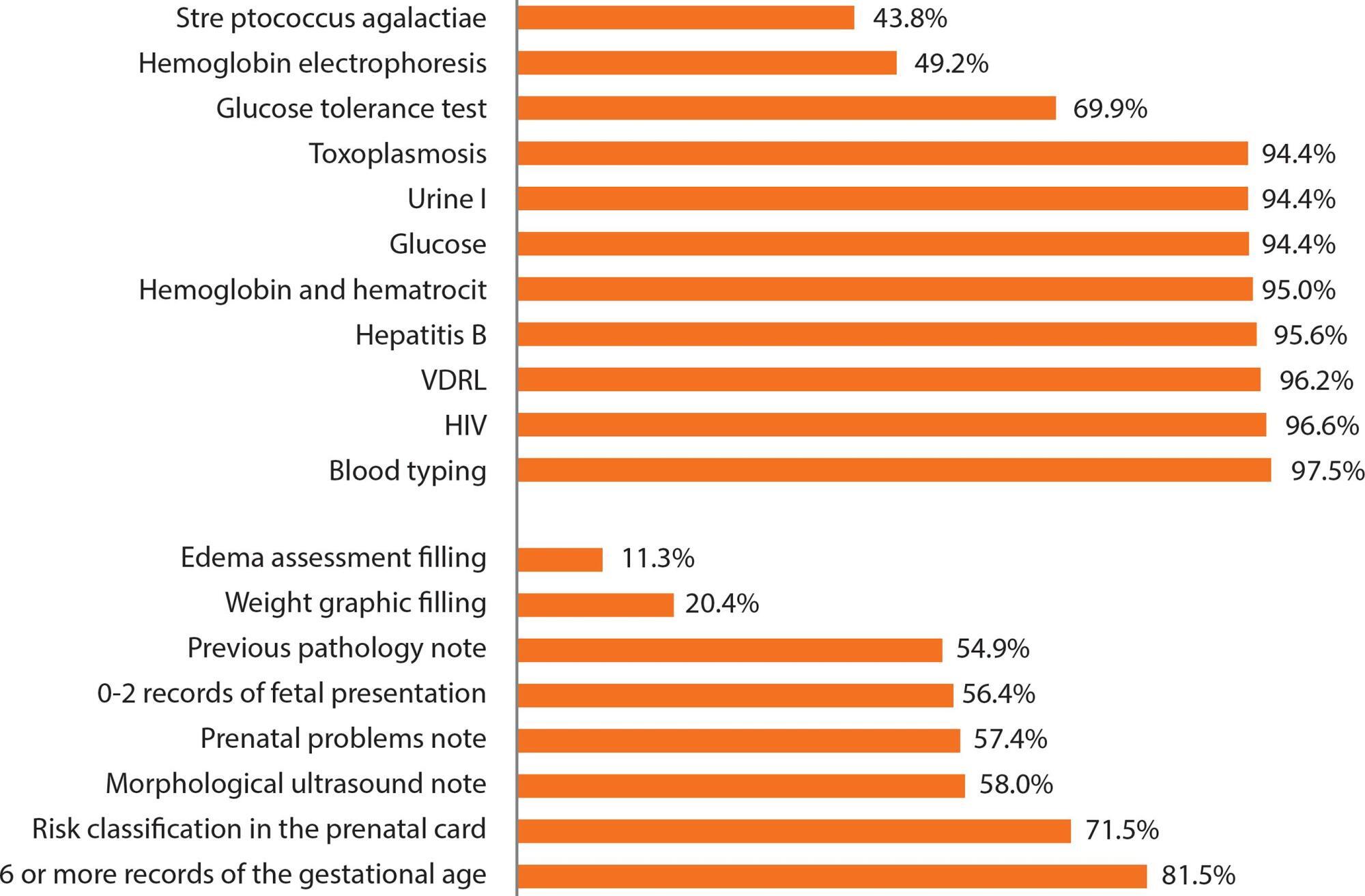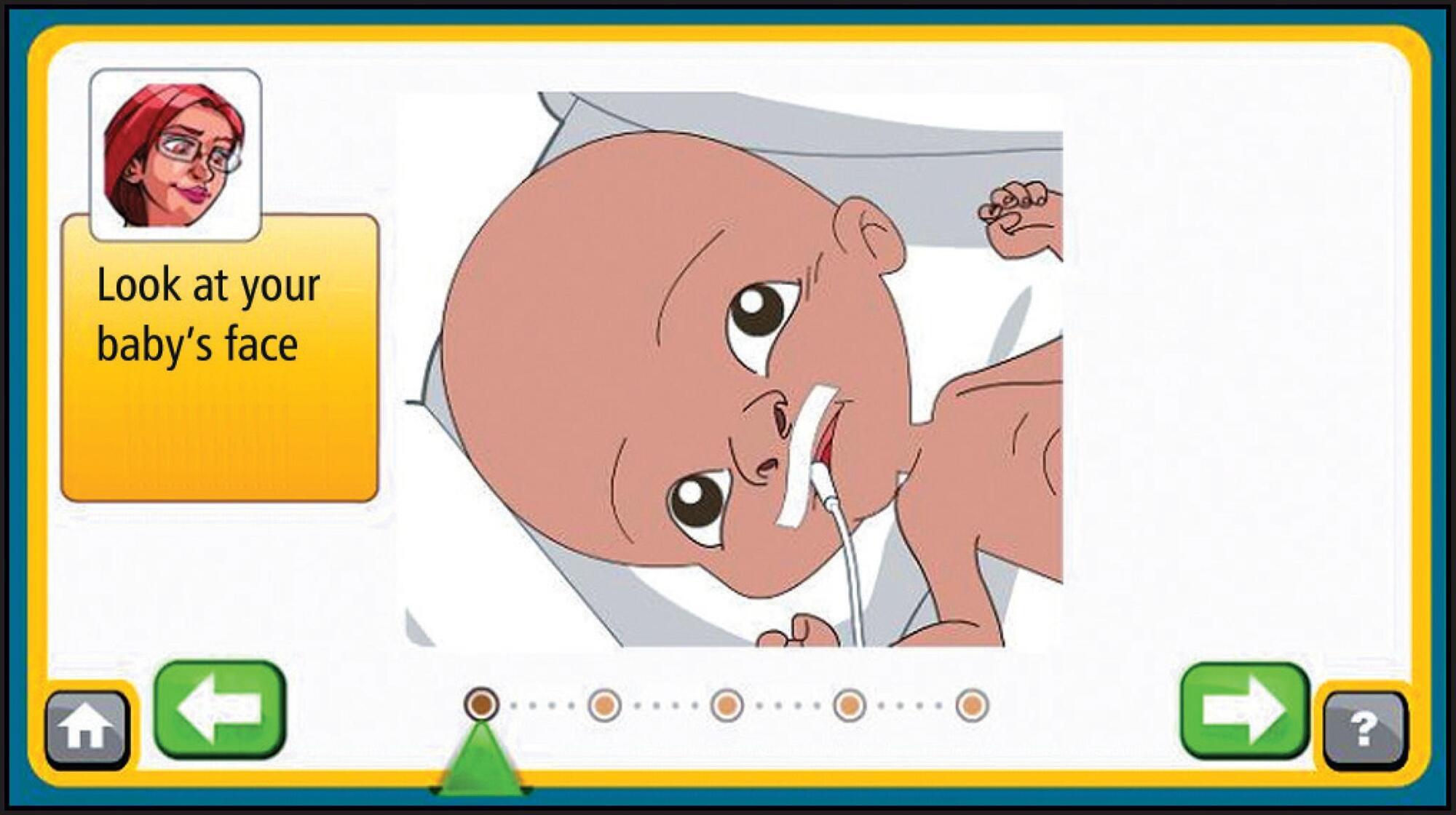-
RESEARCH01-01-2017
Prevention of chronic complications of diabetes mellitus according to complexity
Revista Brasileira de Enfermagem. 2017;70(5):996-1003
Abstract
RESEARCHPrevention of chronic complications of diabetes mellitus according to complexity
Revista Brasileira de Enfermagem. 2017;70(5):996-1003
DOI 10.1590/0034-7167-2016-0080
Views0See moreABSTRACT
Objective:
To assess the prevention by primary health care providers of chronic complications of diabetes mellitus according to the complex thinking theoretical approach.
Method:
Evaluative research based on the complex thinking theoretical approach. The following techniques for data collection were used: interviews with 38 participants; observation in collective and individual appointments; and analysis of medical records of people with diabetes. The triangulation applied for data analysis was the ATLAS.ti software.
Results:
The prevention and management of chronic complications of diabetes did not meet the requirements set forth by ministerial public policies aimed at this population. Systematic monitoring to prevention of chronic complications showed significant gaps.
Final considerations:
Primary health care did not consider preventive actions for diabetes mellitus complications. This context was marked by disjunctive, fragmented, and dissociated practices types of care targeted to the totality of the assisted people.
-
RESEARCH01-01-2017
Job satisfaction in an oncology nursing team
Revista Brasileira de Enfermagem. 2017;70(5):988-995
Abstract
RESEARCHJob satisfaction in an oncology nursing team
Revista Brasileira de Enfermagem. 2017;70(5):988-995
DOI 10.1590/0034-7167-2016-0422
Views0See moreABSTRACT
Objective:
to identify the level of attributed, perceived and real job satisfaction of oncology nursing professionals and analyze the relationships between the levels of satisfaction among these workers.
Method:
a descriptive, quantitative cross-sectional study was conducted using the Index of Work Satisfaction (IWS) to evaluate the nursing team, nurses and technicians/auxiliaries. A total of 348 workers answered the questionnaire, of which 216 were fully completed and considered for the IWS calculation.
Results:
Autonomy was considered the most important item in attributed satisfaction for the nursing team and nurses. Salary was valorized most by the technicians/auxiliaries. For perceived satisfaction, Professional Status was the most important for all workers. Regarding real satisfaction, Interaction was the most important for the nursing team and technicians/auxiliaries; while the nurses valorized Autonomy. The nurses presented the greatest job satisfaction.
Conclusion:
a discrepancy was observed in job satisfaction among the oncology nurses, indicating the importance of further quantitative research.
-
RESEARCH01-01-2017
Relational technologies as instruments of care in the Family Health Strategy
Revista Brasileira de Enfermagem. 2017;70(5):981-987
Abstract
RESEARCHRelational technologies as instruments of care in the Family Health Strategy
Revista Brasileira de Enfermagem. 2017;70(5):981-987
DOI 10.1590/0034-7167-2016-0337
Views1See moreABSTRACT
Objective:
This article aims to identify the relational technologies used by Family Health Strategy nurses in their daily work when treating patients.
Method:
Descriptive and cross-sectional study with qualitative approach; conducted between May and July 2015, in three Basic Health Units of the Southern Region of the Municipality of São Paulo, with 19 nurses of the Family Health Strategy. Data were collected through a semi-structured interview, and the speeches were fully transcribed and analyzed according to the technique of content analysis.
Results:
From the speeches of the participants, three categories emerged, showing the unawareness of the concept, but the valorization of its use; which are the relational technologies used by the participating nurses (communication, listening, empathy and welcoming reception), as well as the report of barriers to the use of relational technologies.
Final consideration:
Although the nurses value the use of relational technologies, the participants denoted unawareness of the nomenclature and its associated concepts, suggesting superficiality in the understanding and use of these instruments in the context of care in the Family Health Strategy.
-
RESEARCH01-01-2017
Knowledge and practice in mental health nursing care
Revista Brasileira de Enfermagem. 2017;70(5):973-980
Abstract
RESEARCHKnowledge and practice in mental health nursing care
Revista Brasileira de Enfermagem. 2017;70(5):973-980
DOI 10.1590/0034-7167-2016-0343
Views0See moreABSTRACT
Objective:
To understand mental health nursing care based on the concept of the subject of the unconscious proposed by Lacan.
Method:
A narrative study was carried out with 19 nurses, chosen based on their theoretical approach or referral by other participants, through the snowball sampling technique. The interviews were carried out in person or digitally, and were recorded and fully transcribed.
Results:
The analysis was carried out based on Freudian and Lacanian psychoanalysis, approaching nursing care as it acts on the body, secretions, and excretions, to distinguish it from the spirit of fineness. Effects on care are discussed, considering the subject of the unconscious with its knowledge, creating unique exits (sinthome). In this situation, professionals are required to abstain from a position of knowing what is better for the Other.
Final considerations:
This nursing care perspective offers contributions when discussing the centrality of the subject and words in the care process.
-
RESEARCH01-01-2017
Weaving the West Psychosocial Care Network of the municipality of São Paulo
Revista Brasileira de Enfermagem. 2017;70(5):965-972
Abstract
RESEARCHWeaving the West Psychosocial Care Network of the municipality of São Paulo
Revista Brasileira de Enfermagem. 2017;70(5):965-972
DOI 10.1590/0034-7167-2016-0566
Views0See moreABSTRACT
Objective:
to understand how health service professionals involved in the care of users in psychic distress perceive the organization of the Psychosocial Care Network (RAPS – Rede de Atenção Psicossocial) in the western region of the city of São Paulo.
Method:
qualitative approach study conducted with 123 professionals with higher education who work in the care points of the network. A semi-structured interview was performed and data were submitted to the Alceste program for lexical analysis.
Results:
the network is in process of alignment with the mental health policy and the psychosocial rehabilitation strategy. However, the weaknesses in the work process of teams are related to deficits in human resources, structure, and communication, and to the limited appropriation of their guidelines.
Final considerations:
there are intense efforts of workers to weave the network, and barriers need to be overcome to support successful actions in mental health care in the territory.

-
RESEARCH01-01-2017
Chronotype and work shift in nursing workers of university hospitals
Revista Brasileira de Enfermagem. 2017;70(5):958-964
Abstract
RESEARCHChronotype and work shift in nursing workers of university hospitals
Revista Brasileira de Enfermagem. 2017;70(5):958-964
DOI 10.1590/0034-7167-2016-0542
Views0See moreABSTRACT
Objective:
To identify the predominant chronotype in nursing workers who work in surgical clinics of university hospitals and to verify the association with work shift.
Method:
Cross-sectional study, performed in surgical clinics of university hospitals in the Southern region of Brazil. The sample of 270 nursing workers answered questions of socio-occupational characterization, of health and the Morningness-Eveningness Questionnaire of Horne and Östberg. We performed a descriptive and bivariate analysis with the help of the SPSS software and confidence interval of 95%.
Results:
The indifferent chronotype predominated (45.2%). There were significant differences between occupational categories and variables “age” (p<0.001), “use of medication” (p=0.035) and “choice of work shift” (p=0.001). There was an association between the chronotype and the variables “work leave due to illness” (p=0.021), “children” (p=0.025), “use of medication” (p=0.018) and “work shift” (p=0.001).
Conclusion:
The chronotype remained indifferent, and the results confirmed association between chronotype and work shift.

-
RESEARCH01-01-2017
Difficulties in nutritional counseling and child growth follow-up: from a professional perspective
Revista Brasileira de Enfermagem. 2017;70(5):949-957
Abstract
RESEARCHDifficulties in nutritional counseling and child growth follow-up: from a professional perspective
Revista Brasileira de Enfermagem. 2017;70(5):949-957
DOI 10.1590/0034-7167-2016-0527
Views0See moreABSTRACT
Introduction:
Nutritional counseling and growth follow-up are priorities when providing care to children; however, these have not been completely incorporated into primary health care.
Objective:
To know the difficulties for providing nutritional counseling and child growth follow-up, from a professional healthcare perspective.
Method:
Qualitative study, using Donabedian as theoretical framework, developed by 53 professionals in the field of primary health care. Data was obtained from focal groups and submitted to content analysis.
Results:
The main difficulties for nutritional counseling were clustered in the category of ‘perceptions and beliefs related to child feeding’. The ‘problems of infrastructure and healthcare’ and ‘maintenance of the hegemonic medical model’ are the main difficulties for following-up growth.
Final considerations:
Besides investments in infrastructure, healthcare training is indispensable considering beliefs and professional experiences, so in fact, nutritional counseling and child growth follow-up are incorporated in primary health care.

-
RESEARCH01-01-2017
Severity and workload related to adverse events in the ICU
Revista Brasileira de Enfermagem. 2017;70(5):942-948
Abstract
RESEARCHSeverity and workload related to adverse events in the ICU
Revista Brasileira de Enfermagem. 2017;70(5):942-948
DOI 10.1590/0034-7167-2016-0427
Views0See moreABSTRACT
Objective:
To analyze whether an increase in patient severity and nursing workload are correlated to a greater incidence of adverse events (AEs) in critical patients.
Method:
A prospective single cohort study was performed on a sample of 138 patients hospitalized in an intensive care unit (ICU).
Results:
A total of 166 AEs, occurred, affecting 50.7% of the patients. Increased patient severity presented a direct relationship to the probability of AEs occurring. However, nursing workload did not present a statistically significant relationship with the occurrence of AEs.
Conclusion:
The results cast light on the importance of using evaluation tools by the nursing personnel in order to optimize their daily activities and focus on patient safety.
-
REVIEW06-10-2022
Self-inflicted violence and suicide in people living with HIV/AIDS: a systematic review
Revista Brasileira de Enfermagem. 2022;75:e20210768
Abstract
REVIEWSelf-inflicted violence and suicide in people living with HIV/AIDS: a systematic review
Revista Brasileira de Enfermagem. 2022;75:e20210768
DOI 10.1590/0034-7167-2021-0768
Views0See moreABSTRACT
Objectives:
to analyze intellectual productions on self-inflicted violence and suicide in people living with HIV/AIDS.
Methods:
a systematic review, carried out between March and April 2021, in the PubMed®/MEDLINE®, Web of Science and LILACS databases, subsidized in the Strengthening the Reporting of Observational Studies in Epidemiology. The period outlined was from 2011 to 2020.
Results:
a total of 199 studies were identified, and 16 composed the final sample, grouped into the categories: Sociodemographic characteristics of victims of self-inflicted violence/suicide and their intervening factors (pointing to young adults, especially homosexuals, with low social support and a history of mental illness or substance abuse as usual victims); Successful measures for suicide prevention/control in people living with HIV/AIDS (suggesting more frequent psychosocial and clinical follow-up of those starting antiretroviral and immunocompromised treatment).
Conclusions:
biopsychosocial follow-up, analysis of sociodemographic profile and intervening factors should be frequent in this population for disease prevention/control.

-
ORIGINAL ARTICLE09-05-2022
Screening for common mental disorder in elderly residents in the countryside: a cross-sectional study
Revista Brasileira de Enfermagem. 2022;75:e20210875
Abstract
ORIGINAL ARTICLEScreening for common mental disorder in elderly residents in the countryside: a cross-sectional study
Revista Brasileira de Enfermagem. 2022;75:e20210875
DOI 10.1590/0034-7167-2021-0875
Views0See moreABSTRACT
Objective:
To estimate the prevalence of common mental disorders and their associated factors in the elderly in a municipality in the countryside of the Brazilian Midwest.
Methods:
Quantitative, observational, cross-sectional approach research, conducted with 218 elderly people.
Results:
The prevalence of the common mental disorder among the elderly was 25.1%; in the univariate analysis, it was higher in females (35.4%), in the age group of 80 years or older (46.1%), brown skin color (30.2%), widowed (42.6%), illiterate (47.6%), and retired (27.6%). In the multiple analysis, the variables female gender (p<0.006), age 80 years or older (p<0.036), dissatisfaction with life (p<0.009), lack of social interaction (p=0.017), and dysfunctional family (p=0.021) remained associated with CMD.
Conclusion:
The results revealed are helpful and contribute to the reinforcement of the need for mental health care in this population extract so growing worldwide.
-
ORIGINAL ARTICLE06-03-2022
Association between falls in older adults and prevention group
Revista Brasileira de Enfermagem. 2022;75:e20200207
Abstract
ORIGINAL ARTICLEAssociation between falls in older adults and prevention group
Revista Brasileira de Enfermagem. 2022;75:e20200207
DOI 10.1590/0034-7167-2020-0207
Views0See moreABSTRACT
Objectives:
to assess the effectiveness of guidelines on fall prevention in a group of older adults in Primary Health Care.
Methods:
a cross-sectional study, carried out with older adults selected by a simple random sample (274; N=1,234). Data covered sociodemographic and socioeconomic variables, marital status, health conditions, factors associated with falls and participation in the prevention group. Student’s t test was used, and dichotomous variables were used by the chi-square test. The project met ethical requirements.
Results:
sample with female profile (61.7%), married, with low education, mean age of 71.69 years. The factors associated with falls identified were female sex, medicalization and participation in the prevention group. There was no protective association between participation in a fall prevention group in older adults and a decrease in the number of falls.
Conclusions:
based on evidence, a personalized intervention during the nursing visit is suggested as a strategy to prevent falls.

-
ORIGINAL ARTICLE03-07-2022
Predictors of frailty in older people users of Primary Health Care
Revista Brasileira de Enfermagem. 2022;75:e20201292
Abstract
ORIGINAL ARTICLEPredictors of frailty in older people users of Primary Health Care
Revista Brasileira de Enfermagem. 2022;75:e20201292
DOI 10.1590/0034-7167-2020-1292
Views0See moreABSTRACT
Objective:
to identify the prevalence and predictors of frailty in older people in Primary Health Care.
Method:
this is a descriptive and correlational study, carried out in a convenience sample of 136 older people in the community. Data were collected through a sociodemographic and clinical questionnaire and frailty phenotype. Student’s t test or U-Mann-Whitney test, chi-square and binary logistic regression were used for data analysis.
Results:
the prevalence of frailty was 26.5% (n=36). Frail individuals had older age (p=0.011), worse self-rated health (p=0.001) and lower physical capacity (p<0.001). In the multivariable regression, it was observed that frail individuals had older age (Odds Ratio=1.111; 95% confidence interval=1.026-1.203) and worse physical capacity (Odds Ratio=0.673; 95% confidence interval=0.508-0.893).
Conclusions:
the prevalence of frailty in older people in Primary Health Care was considerable. Advanced age and worse physical capacity were the most relevant predictors of frailty in the elderly.
-
ORIGINAL ARTICLE04-15-2022
Validation of Questionnaire to Assess the Impact of Dementia on the Family
Revista Brasileira de Enfermagem. 2022;75:e20210232
Abstract
ORIGINAL ARTICLEValidation of Questionnaire to Assess the Impact of Dementia on the Family
Revista Brasileira de Enfermagem. 2022;75:e20210232
DOI 10.1590/0034-7167-2021-0232
Views0See moreABSTRACT
Objective:
To validate a questionnaire to assess the impact of dementia on one of the household members.
Methods:
Methodological study. The instrument was designed based on literature review, expert opinion, and researchers’ experience and then applied to a non-probability convenience sample consisting of 262 family members who live daily with a person with dementia. The construct validity was studied by exploratory factor analysis, principal components method, with varimax rotation of the items.
Results:
An instrument with 30 items was obtained, distributed in four dimensions: “Emotional dimension,” “Economic dimension,” “Family relations dimension,” and “Support-seeking dimension.” Factor analysis revealed a total explained variance of 54.96% and a total Cronbach’s alpha of .899.
Conclusions:
The instrument presents high internal consistency, grouped into four dimensions, all closely related to the family’s adaptation to the onset of dementia in one of its members.
-
ORIGINAL ARTICLE03-07-2022
Is self-esteem associated with the elderly person’s quality of life?
Revista Brasileira de Enfermagem. 2022;75:e20210388
Abstract
ORIGINAL ARTICLEIs self-esteem associated with the elderly person’s quality of life?
Revista Brasileira de Enfermagem. 2022;75:e20210388
DOI 10.1590/0034-7167-2021-0388
Views0See moreABSTRACT
Objective:
To analyze the association between self-esteem and quality of life in the elderly.
Methods:
Cross-sectional web survey developed with 519 elderly people. Participants filled out three data collection instruments developed on the Google Forms platform and widely disseminated through all of Brazil. Fisher’s exact test, Mann-Whitney, Pearson correlation, and linear regression with 95% confidence interval were used.
Results:
Self-esteem was associated with all quality-of-life facets: sensory skills [β= 1.307; p<0.001]; autonomy [β= 2.101; p<0.001]; past, present, and future activities [β= 2.486; p<0.001]; social presence [β= 2.547; p<0.001]; death and dying [β= 2.175; p<0.001]; and intimacy [β=2.378; p<0.001].
Conclusion:
There is a positive and statistically significant association between self-esteem and quality of life in the elderly. We therefore suggest the development of local policies capable of raising this age groups’ self-esteem and reaffirming aging as a new possibility for discoveries and pleasure.
-
EXPERIENCE REPORT10-24-2022
Nursing process for elderly women susceptible to falls from the perspective of the Pender’s Model
Revista Brasileira de Enfermagem. 2022;75:e20210913
Abstract
EXPERIENCE REPORTNursing process for elderly women susceptible to falls from the perspective of the Pender’s Model
Revista Brasileira de Enfermagem. 2022;75:e20210913
DOI 10.1590/0034-7167-2021-0913
Views0See moreABSTRACT
Objectives:
to describe the strategy of applying the nursing process guided by Pender’s Health Promotion Model to elderly women susceptible to falls with a view to promoting a self-efficacy behavior for fall prevention.
Methods:
application of the nursing process to eleven elderly women who had already experienced falls, living in a neighborhood in the outskirts of Belem, state of Pará, which involved interviews to obtain their nursing history and group meetings using the focus group technique to develop the other phases of the nursing process: nursing diagnosis, nursing interventions, and nursing assessment.
Results:
despite the risk factors for falls, the intervention model adopted in this study allowed elderly women to enhance their self-efficacy.
Final Considerations:
the model proved to be suitable for the participation of elderly women in actions to build fall prevention behaviors, with a view to healthier lifestyles.

-
ORIGINAL ARTICLE10-24-2022
Factors associated with symptoms of physical and emotional burden in informal caregivers of the elderly
Revista Brasileira de Enfermagem. 2022;75:e20210927
Abstract
ORIGINAL ARTICLEFactors associated with symptoms of physical and emotional burden in informal caregivers of the elderly
Revista Brasileira de Enfermagem. 2022;75:e20210927
DOI 10.1590/0034-7167-2021-0927
Views1See moreABSTRACT
Objectives:
to analyze the personal and work-related burden factors associated with physical and emotional symptoms of informal caregivers of the elderly.
Methods:
cross-sectional study conducted with 121 informal caregivers and 121 seniors who received care, assessed individually for the risk of: physical overload, musculoskeletal symptoms, Self-Reporting Questionnaire, effort perception, and Katz index.
Results:
a greater perception of effort raises up to 3.3 times the chances of presenting symptoms of pain in the spine region (p=0.01), and lower functional capacity of the elderly increases up to 1.3 times the chances of presenting pain symptoms in the spine region (p=0.02). The symptoms of emotional overload were associated with the caregiver’s low income (p=0.02).
Conclusions:
the perception of effort, dependence of the elderly, caregiver’s age, and symptoms of emotional overload are involved with caregivers’ symptoms of physical overload, and low income, with emotional overload.
-
ORIGINAL ARTICLE12-05-2019
Aging, sexuality and nursing care: the elderly woman’s look
Revista Brasileira de Enfermagem. 2019;72:71-78
Abstract
ORIGINAL ARTICLEAging, sexuality and nursing care: the elderly woman’s look
Revista Brasileira de Enfermagem. 2019;72:71-78
DOI 10.1590/0034-7167-2018-0015
Views0See moreABSTRACT
Objective:
to analyze the perception of elderly women about sexuality and practice of nursing care in this context.
Method:
a descriptive qualitative study. Fifty elderly women from Guanambi City – Bahia State were interviewed in 2016. Data collection technique was direct interview by using an unstructured script. Analysis of the semantic content described was carried out, and two empirical categories: the elderly woman’s view of nursing care in the promotion of sexual health and experience of sexuality in the elderly; and nursing care in the context of women’s aging.
Results:
it has been noted that the elderly women are afraid to talk about sexuality, especially with health professionals. By influences of society, they often exclude this issue of health care for elderly women.
Final considerations:
changes must be thought about assistance provided in relation to sexuality.
-
ORIGINAL ARTICLE12-05-2019
Construction and validation of a sleep hygiene booklet for the elderly
Revista Brasileira de Enfermagem. 2019;72:214-220
Abstract
ORIGINAL ARTICLEConstruction and validation of a sleep hygiene booklet for the elderly
Revista Brasileira de Enfermagem. 2019;72:214-220
DOI 10.1590/0034-7167-2018-0603
Views0See moreABSTRACT
Objective:
to construct and validate an educational booklet for the elderly, with guidelines on sleep hygiene.
Method:
a methodological research with booklet construction; validation by 22 judges and evaluation by 22 elderly people. The content was extracted from the guidelines of the Brazilian Sleep Association and the elderly health manual of the Human Rights Office. The item with Content Validity Index (CVI) greater than 0.8 or whose concordance ratio verified with the Binomial Test was valid and statistically equal to or greater than 80%.
Results:
the booklet presented 14 guidelines for the elderly about sleep hygiene distributed over 25 pages. All items were evaluated as relevant. The CVI had an average of 0.95 by the judges and 0.95 by the elderly.
Conclusion:
the booklet was constructed and validated as to its content and appearance. It can be used by health professionals in the various services with the elderly.

-
ORIGINAL ARTICLE05-18-2020
Authentic leadership among nursing professionals: knowledge and profile
Revista Brasileira de Enfermagem. 2020;73(4):e20180888
Abstract
ORIGINAL ARTICLEAuthentic leadership among nursing professionals: knowledge and profile
Revista Brasileira de Enfermagem. 2020;73(4):e20180888
DOI 10.1590/0034-7167-2018-0888
Views0See moreABSTRACT
Objectives:
to identify the knowledge of nursing professionals about leadership models and evaluate the authentic leadership profile among them.
Methods:
analytical study, conducted between August and December 2015, involving 84 nursing professionals working in a public and tertiary hospital. We used two instruments: Sociodemographic Questionnaire with questions about leadership and the Authentic Leadership Questionnaire.
Results:
both nurses and nursing technicians were unaware of authentic leadership. Both pointed to communication, planning, and organization as competencies of the leader (n = 58, 95%). Regarding the authentic leadership profile, we observed that the score was “high” among nurses and “low” among technicians. Holding a leadership position and professionally upgrading has positively influenced the highest-profile of authentic leadership.
Conclusions:
nurses demonstrated to know behavioral leadership, while nursing technicians showed knowledge about situational leadership. Nurses had a high score of authentic leadership behaviors, while nursing technicians had a low score, but we found no significant difference between them. Holding a leadership position and professionally upgrading has positively influenced the highest profile of authentic leadership.
-
ORIGINAL ARTICLE09-29-2022
Relationship between family functionality and the quality of life of the elderly
Revista Brasileira de Enfermagem. 2022;75(2):e20210106
Abstract
ORIGINAL ARTICLERelationship between family functionality and the quality of life of the elderly
Revista Brasileira de Enfermagem. 2022;75(2):e20210106
DOI 10.1590/0034-7167-2021-0106
Views0See moreABSTRACT
Objective:
To analyze the correlation between family functionality and the quality of life of the elderly.
Method:
Sectional and correlational study conducted with 692 Brazilian elderly between July and October 2020. The elderly filled three instruments: biosociodemographic, family APGAR and WHOQOL-Old. The tests Kruskal-Wallis, Pearson correlation, and linear regression analyzed the data. The study considered a 95% confidence interval (p < 0.05) for all analyses.
Results:
The elderly with mild and severe family dysfunction presented worse quality of life when compared to the elderly with a functional family. All facets of quality of life correlated positively with family functionality.
Conclusion:
Family functionality is positively correlated with the quality of life of the elderly, therefore requiring the inclusion of the family in health care plans to identify potential family stressors early and plan interventions to solve the problems raised.
-
ORIGINAL ARTICLE12-13-2019
Prenatal follow-up of high-risk pregnancy in the public service
Revista Brasileira de Enfermagem. 2019;72:204-211
Abstract
ORIGINAL ARTICLEPrenatal follow-up of high-risk pregnancy in the public service
Revista Brasileira de Enfermagem. 2019;72:204-211
DOI 10.1590/0034-7167-2018-0425
Views0See moreABSTRACT
Objective:
to analyze the prenatal follow-up of high-risk pregnancy in the public service.
Method:
an analytical cross-sectional study carried out in a public maternity hospital in the South of Brazil, during the hospitalization of 319 postpartum women using a semi-structured tool for transcription of the prenatal card records and interview. The data were analyzed using the Chi-Square test (p≤0.05).
Results:
the adequacy of prenatal care was high (74%); 22.6% intermediate; 3.4% inefficient. Prenatal care had high coverage (100%), early onset (81.5%) and six or more visits (92.4%), but (77.4%) did not receive information about gestational disease and examinations (69.3%). There was statistical significance between the quality of prenatal care and the place of prenatal care (p=0.005).
Conclusion:
the need to implement a specific protocol for high-risk gestation and continuous education to the teams was evidenced.

-
ORIGINAL ARTICLE12-05-2019
Spirituality and religiosity for the transcendence of the elderly being
Revista Brasileira de Enfermagem. 2019;72:259-265
Abstract
ORIGINAL ARTICLESpirituality and religiosity for the transcendence of the elderly being
Revista Brasileira de Enfermagem. 2019;72:259-265
DOI 10.1590/0034-7167-2018-0840
Views0See moreABSTRACT
Objective:
to understand the life experiences that favor transcendence of the elderly being.
Method:
a qualitative phenomenological hermeneutic study, in two groups of elderly coexistence. The selection of participants was by intentional sampling: 11 elderly, achieving theoretical saturation. Data collection was carried out through a phenomenological interview with a detonating question. Ethical principles of the General Health Law in health research were fulfilled. Analysis with Heideggerian hermeneutic circle was performed.
Results:
unity of meaning on the consciousness of a higher power for transcendence is highlighted, where spirituality and religiosity are resources of the elderly for strength, feel protected, overcome difficult situations and reach fullness; both favor the understanding of their historicity by manifesting enlightenment.
Final considerations:
transcendence of the elderly being is favored with spirituality and the experiences of their daily life are imbued with a spiritual and religious relationship that give meaning to their existence.
-
ORIGINAL ARTICLE06-24-2020
Serious Game e-Baby Família: an educational technology for premature infant care
Revista Brasileira de Enfermagem. 2020;73(4):e20190116
Abstract
ORIGINAL ARTICLESerious Game e-Baby Família: an educational technology for premature infant care
Revista Brasileira de Enfermagem. 2020;73(4):e20190116
DOI 10.1590/0034-7167-2019-0116
Views0See moreABSTRACT
Objectives:
to develop and assess the serious game e-Baby Família with parents of premature infants.
Methods:
a methodological study regarding the development of the serious game, with participatory design in scope definition, starting from parents’ learning needs about premature infant care. A qualitative approach was performed in the assessment stage with parents, with content analysis of the speech of the eight participants.
Results:
the following categories emerged: Realistic appearance of the virtual setting and game content and Gameplay implications for the use of e-Baby Família. The game was satisfactorily assessed regarding content, appearance and dynamics use, motivating participants to learn.
Final Considerations:
in the context of prematurity as a public health problem in Brazil and the need to strengthen family health education for care, the serious game was assessed as motivating and appropriate for health learning.

-
03-15-2021
Effectiveness of mobile applications in pregnant women’s adherence to prenatal consultations: randomized clinical trial
Revista Brasileira de Enfermagem. 2021;74:e20190599
Abstract
Effectiveness of mobile applications in pregnant women’s adherence to prenatal consultations: randomized clinical trial
Revista Brasileira de Enfermagem. 2021;74:e20190599
DOI 10.1590/0034-7167-2019-0599
Views0See moreABSTRACT
Objective:
to evaluate the effectiveness of a mobile application for cell phones in the adherence of pregnant women to prenatal consultations.
Method:
a randomized controlled clinical trial, simple-blind with two parallel groups, conducted from January to December 2018. Data collection was carried out through a structured interview at the end of the third trimester of pregnancy. For analysis, Chi-Square and Mann-Whitney tests were used. The sample consisted of 88 pregnant women from 2 Family Health Strategies in Northeast Brazil. Participants were randomized into two groups: intervention (IG), who used the application, and control (CG), who attended prenatal consultations.
Results:
pregnant women who used the application (IG) attended a greater number of consultations when compared to participants in the CG, identifying a statistical difference between the groups (p<0.05).
Conclusion:
the application showed to be an effective health technology to improve adherence to prenatal care. Brazilian Registry of Clinical Trials: RBR-74SNST.

Search
Search in:
Nuvem de Tags
Adolescente (85) Atenção Primária à Saúde (239) COVID-19 (91) Criança (91) Cuidados de Enfermagem (269) Educação em Enfermagem (151) Educação em Saúde (139) Enfermagem (930) Enfermagem Pediátrica (86) Estudantes de Enfermagem (77) Estudos de Validação (131) Família (87) Idoso (208) Promoção da Saúde (99) Qualidade de Vida (104) Saúde do Trabalhador (86) Saúde Mental (145) Saúde Pública (82) Segurança do Paciente (150) Tecnologia Educacional (100)



